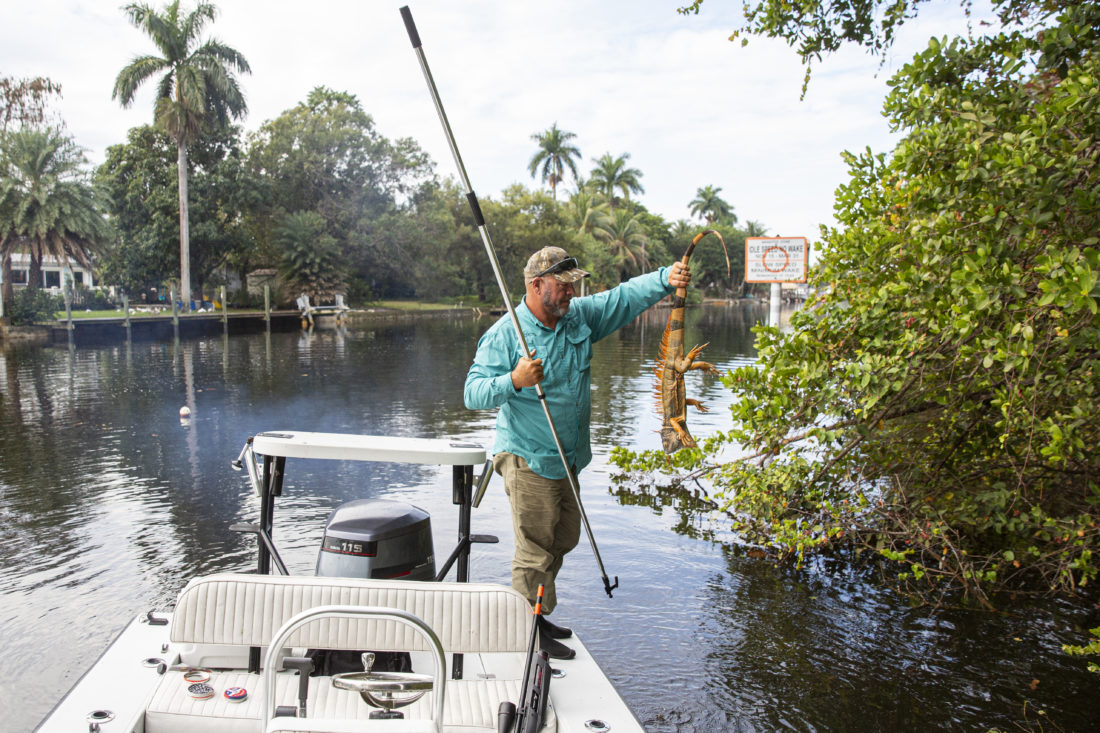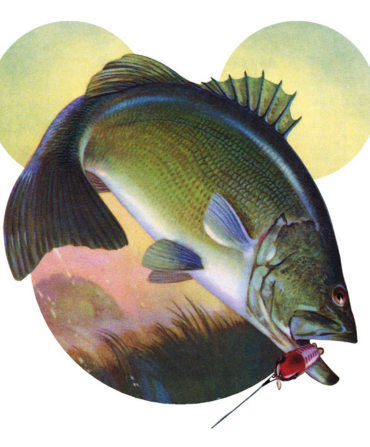Early this year, I found myself motoring down a canal in Fort Lauderdale, passing by private yachts with a .22 caliber air rifle in my lap. About twenty minutes into our run, just as the overcast morning started to warm, my guide spotted a spiny dorsal breaking the leaf pattern of a mangrove tree, and I took my first shot at an invasive green iguana.
Iguanas were first spotted in Dade County in the mid-1960s, having arrived as stowaways on ships from Central and South America and as exotic pets. South Florida’s golf courses, parks, and manicured communities provided a ready-made paradise for escaped lizards. “They like a semi-urban setting, and they’re big on water features,” says herpetologist Joe Wasilewski, who leads the iguana specialist group at the International Union for Conservation of Nature and consults on iguana invasions in Florida and elsewhere.
Having crept up the Atlantic coast to Broward and Palm Beach Counties in the 1990s, an established iguana population now stretches as far north as Port St. Lucie in Martin County. “I feel like they’ll get to Orlando in five to six years,” says Brian Wood, the owner of Iguana Catchers, a removal service based in Dania Beach.
Though there’s no official headcount, researchers estimate that Florida is now home to hundreds of thousands of iguanas, and they can cause significant damage. Iguanas burrow underground to regulate their body temperature and lay eggs, impacting seawalls, roads, and sidewalks. The lizards are a safety hazard on airport runways and crawl into transmission boxes. They decimate native flora (including the host plant for the endangered Miami Blue butterfly) and munch on bird eggs and protected tree snails. In 2019, the Florida Fish & Wildlife Commission issued a statement encouraging the public to humanely kill green iguanas on private property, with owner permission, and on twenty-five of the state’s public lands—no license or permit required.
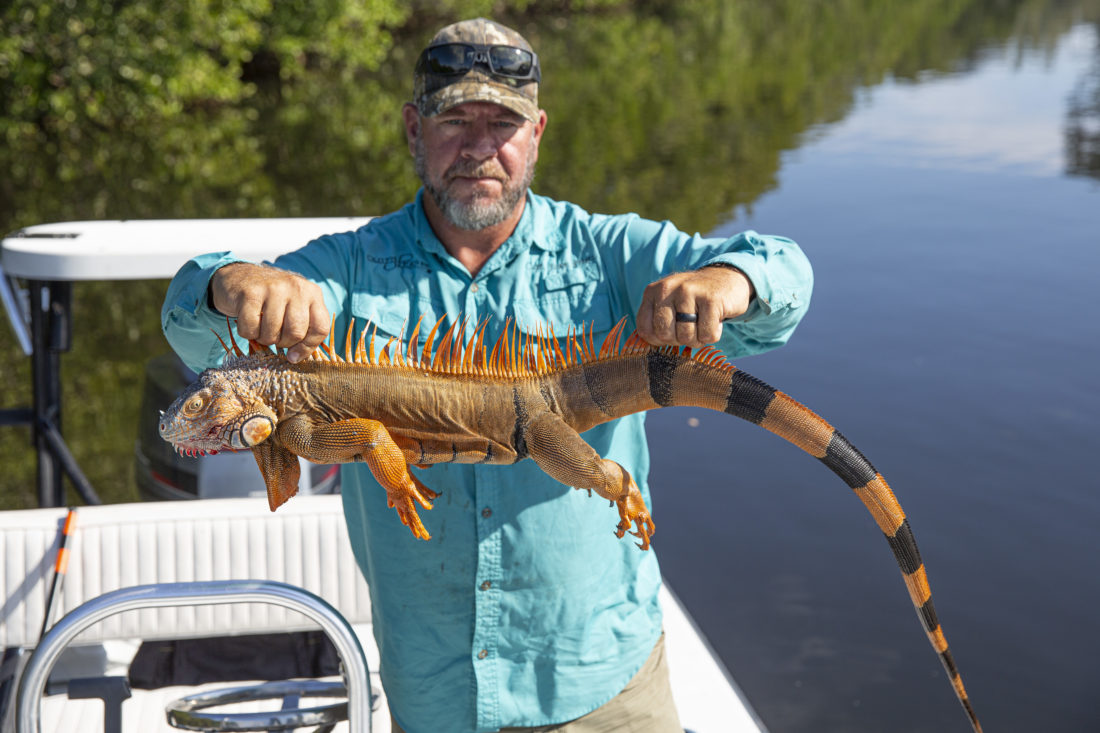
Wasilewski has spent more than thirty years developing programs to protect threatened iguana species in Central America and the Caribbean. “Little did I know that I would be armed with all this knowledge to cull them,” he says. As part of his consulting work, he has removed 25,000 green iguanas from a private Bahamian island; late this summer, he caught more than 400 in three hours at a botanical garden in Miami. He suspects the population boom is connected to climate change and warmer weather.
On my half-day hunt with guide Jason Peters, a licensed captain and the owner of JP Outfitters, I killed nine iguanas, the largest of which was four feet nine inches from tip to tail, with the bright orange color associated with dominant males. The largest of the species can grow more than five feet and up to seventeen pounds. Since I was an iguana hunting novice, Peters made sure I fired away from the construction sites and million-dollar homes lining the canals, and if I didn’t have a clean shot, we moved on. And before our hunt, he called in our boat to the Broward County Sheriff’s department, in case anyone were to report a gun-toting redhead in a taco hat and leopard print leggings.
Peters was born and raised in Fort Lauderdale, and in the last few years, he says, interest in iguana hunting has skyrocketed, so much so that he’s now leading iguana hunting expeditions on high-end golf courses. Still, for all the iguanas he and his clients have bagged, he hasn’t yet seen a noticeable difference in the population. “I’ve been working the same area twice a day,” he says, “and I’m still getting trophies.”
Wasilewski says it’s too early to say what impact hunters are having because the problem is still new and there’s so little data. Government-sponsored culling programs can be effective—and expensive. In 2018, Grand Cayman signed up a few hundred hunters to eradicate its 1.7 million invasive green iguanas; three years later, more than 1.2 million have been culled at the cost of well over $7 million. But there’s been no such centralized effort in Florida, and Wasilewski says current hunting and removal efforts won’t come close to eradicating the population. “The only thing that will eliminate green iguanas in South Florida is mother nature. We need 2010 times five,” he says, referring to a historic twelve-day cold snap that caused a mass iguana die-off.
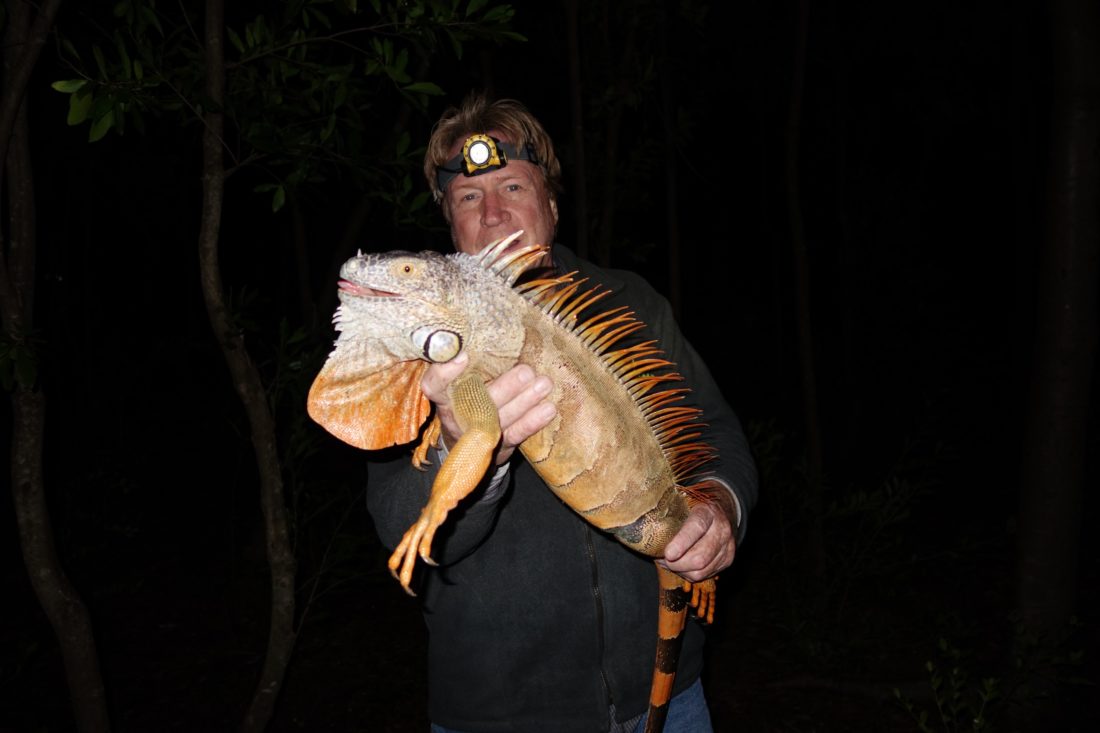
One strategy that could potentially make a difference: putting iguanas on the menu. Iguanas are an important food source in Trinidad, Guyana, Honduras, Belize, and certain parts of Mexico, and Peters says 98 percent of his clients take their iguanas home to cook and eat. Puerto Rico, where iguanas are also invasive, has USDA-approved iguana processing facilities, but as of now, selling Florida-caught iguana is illegal. Wood, of Iguana Catchers, also owns an alligator processing company and already has a label designed for a future iguana meat company should regulations change.
Iguana will have to overcome some mighty cultural hurdles, though, before it becomes an accepted part of the American diet. My relatives in South Florida wouldn’t touch the stuff, so I gave one bag of meat to a chef friend and brought the rest home, where it sat in my freezer for months. The thick reptilian skin had graciously prevented freezer burn, and I eventually decided to follow Wood’s advice on a low and slow braise. An iguana posole dinner party was in order.
To remove the skin, I boiled the leg and tail meat for ten minutes, let it cool, and sliced through the skin with kitchen shears, at which point it peeled right off. After that, I treated the iguana as I would bone-in chicken, simmering it in a flavorful broth, picking the meat, and layering in hominy, charred chiles, tomatillos, onion, garlic, and cilantro.
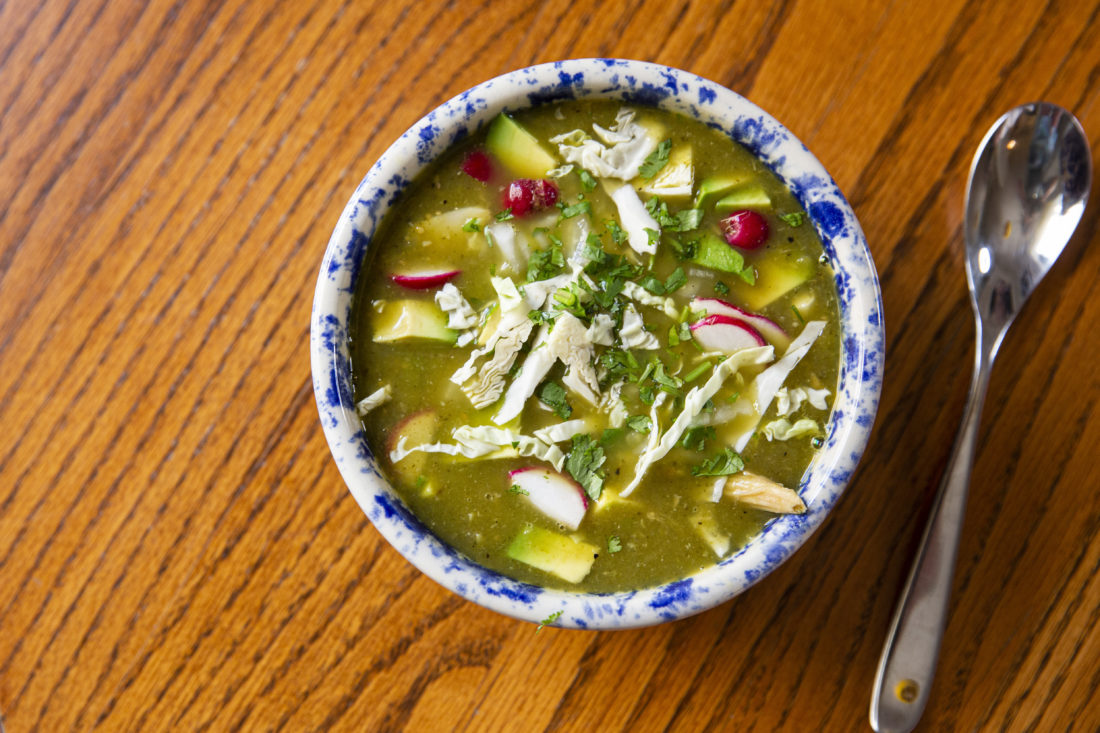
I promised guests I would order a pizza, if necessary, but I never had to make the call. The meat reminded one guest, a food editor, of goose or duck. His partner, who was “totally freaked out by lizards,” finished his bowl. We even dropped off posole at our neighborhood wine store, where the manager paired it with Albariño and declared it “delish.”
I think we all would have preferred to know definitively that my hunt—and our dinner—had made a net positive impact on South Florida ecology. But a bowl of invasive green iguana posole was a tasty consolation.

